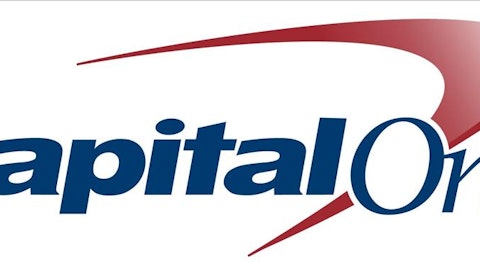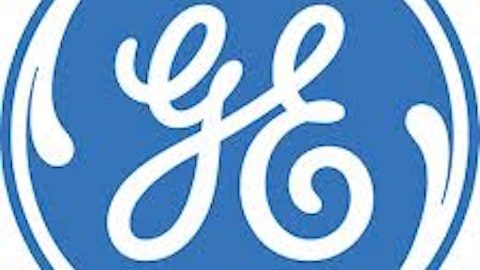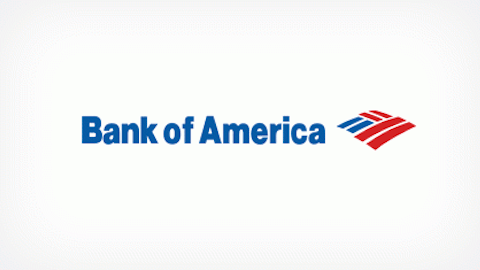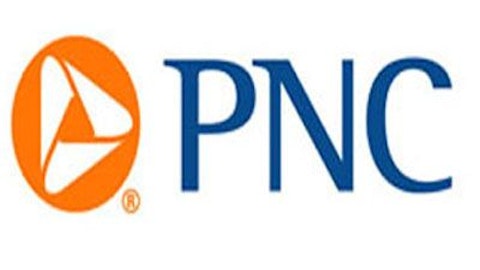Analysts obviously like the chances for PNC to continue growing in the future. The bank has the second highest projected EPS growth rate in the next few years at 7.8%. The only peer bank that is expected to grow faster is BB&T Corporation (NYSE:BBT) at 8.33%, with M&T coming in at 7.6%, and Capital One rounding out the bunch at 7%.
Red Flags
Having worked in a bank for 10 years, one of the most talked about phrases is something being a “red flag.” Bankers like to look for warnings signs or “red flags” everywhere. In a business where risk management is key, this makes sense. That being said, I see two red flags in PNC’s last earnings report.
First, PNC reported deposit growth of 9%, but their transaction deposit growth rate was just 7%. While this is nothing to be ashamed about, BB&T Corporation (NYSE:BBT) and M&T reported 24% and 14% increases in non-interest checking account balances, which were both much higher than their total deposit growth. Capital One didn’t break down their deposit growth so we can’t compare. What this means is PNC grew total deposits by bringing in more expensive interest bearing deposits; BB&T Corporation (NYSE:BBT) and M&T reported slower growth overall, but less expensive non-interest bearing accounts were the driving force.
The second issue I noted was PNC’s level of non-performing loans isn’t dropping as fast as some of their peers. For instance, BB&T reported a better than 30% decrease in non-performing assets. PNC and M&T reported much slower declines in non-performers at 4% and 1.87% respectively. Since BB&T’s non-performing loan percentage leads the group at just 1.12%, this 30%+ decline is significant. M&T’s decline was slower than PNC, but their percentage is also lower at 1.6%. By comparison, PNC’s percentage of problem loans is 1.83%. A comparison of PNC and Capital One is a bit unfair, as Capital One’s portfolio is more credit card based. That being said, Capital One’s charge off rate was just 2.2%.
Wait for Clarity
I know that PNC’s stock is up more than 30% since the end of last year, but in this case, I would suggest investors wait for some clarity. Peter Lynch used to say, if the company is a great investment today, it’s going to be a great investment tomorrow, next week, next month, and next year. I don’t believe rushing to buy PNC stock is wise at this point.
Investors have no idea what the bank’s real growth rate is until the RBC acquisition benefits drop off. If PNC is being carried by the RBC deal, the stock could be in real trouble. It’s more than a little worrisome that PNC isn’t giving investors complete information about their organic growth without RBC. In a case like this, waiting for clarity seems to be the best course of action.
The article The Great Unanswered Question at This Bank originally appeared on Fool.com.
Chad Henage owns shares of BB&T.; The Motley Fool owns shares of PNC Financial Services (NYSE:PNC). Chad is a member of The Motley Fool Blog Network — entries represent the personal opinion of the blogger and are not formally edited.
Copyright © 1995 – 2013 The Motley Fool, LLC. All rights reserved. The Motley Fool has a disclosure policy.




